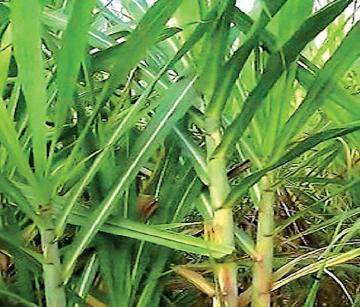
Sugarcane tops (Saccharum officinarum)
Common name: Sugarcane
Local names: Hindi: Eekh, Ganna Manipuri: Chu Marathi: wade Tamil: Karumbu, Pundaram Malayalam: Karibpu Telugu: Cheruku Kannada: Petta patti kabbu, Khabbu Urdu: Ganna Sanskrit: Ikshu, Pundrakah
Sugarcane is a plant which is actually a giant grass. The stem is jointed, 3–5 m tall, 2–3 cm thick, solid juicy, the lower internodes short, swollen; sheaths greatly overlapping, the lower usually falling from the culms. Tops include growing point of the cane, a few of the upper nodes and accompanying leaves. On large farms the tops and dry leaves are burned off before the cane is processed for disposal, while on small farms the tops are cut for livestock feed.
Nutritive value: The feeding value of fresh cane tops is not very promising. It contains 3% CP and 45% TDN. It contains oxalate as a deleterious factor.
Inclusion
The material serves as roughage in conjugation with concentrates. Sugar cane tops can be very well ensiled alone as well as with 0.5% urea. The silage is well acceptable to crossbred cattle and contains 47.8% TDN (Banerjee, 2000).
